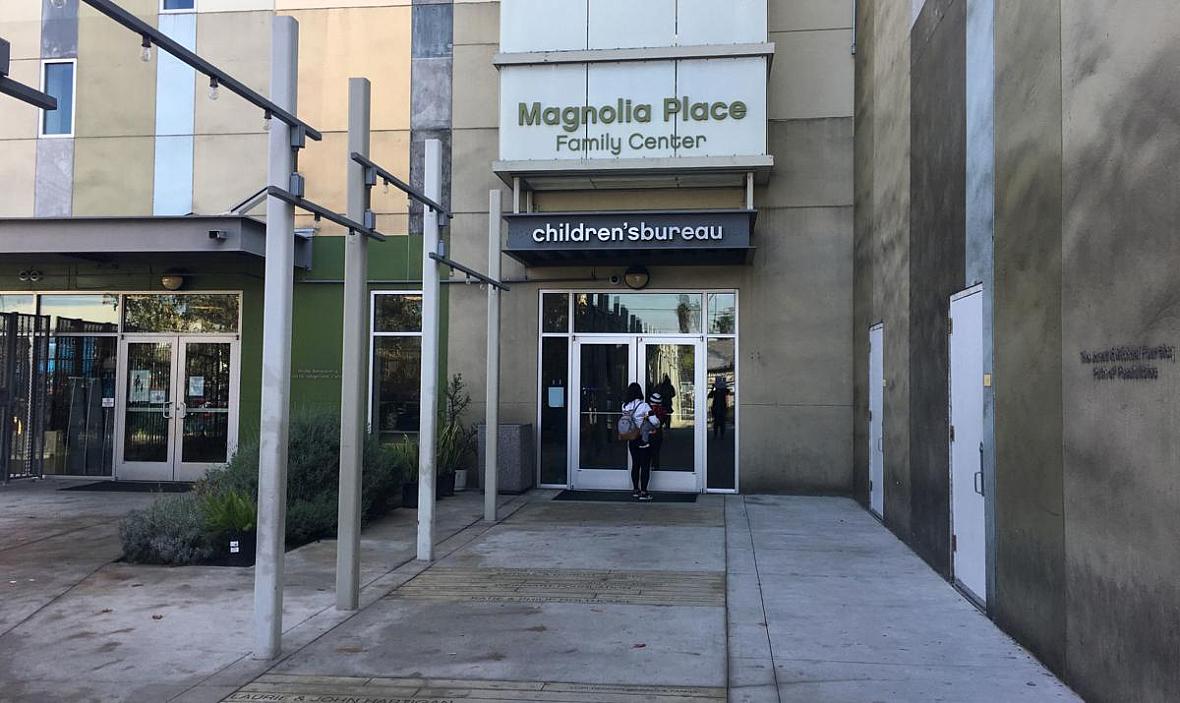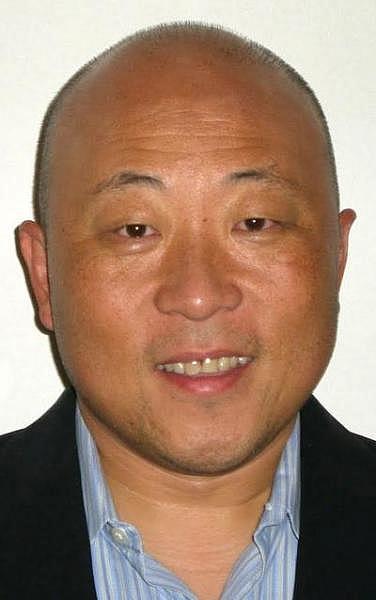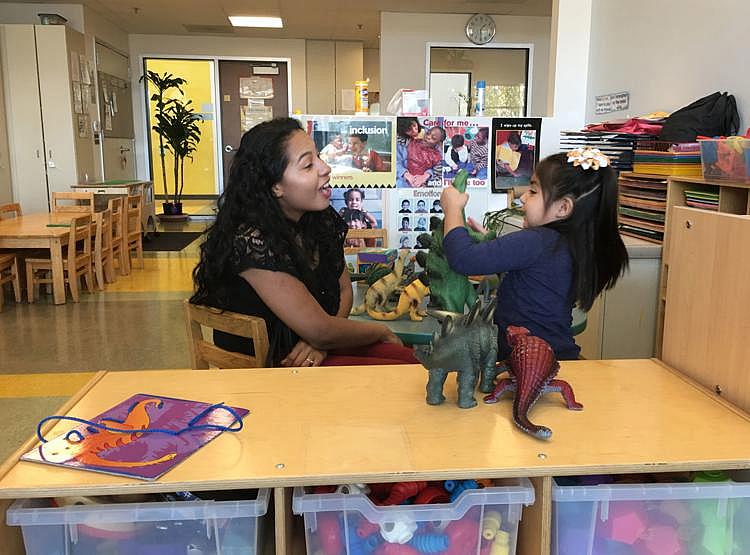Shared goals, collaboration are keys to family success
Perla Trevizo is a recipient of the University of Southern California Annenberg Center's Fund for Journalism on Child Well-being.
Other stories in this series include:
Part 1: Arizona Daily Star special investigation: Fixing our foster care crisis
Part 2: Despite state progress in Arizona, 'a lot of desperation, isolation'
Part 3: Hard work of reunification often entails rehab, intensive home services
Reporters reveal deep faults in Arizona’s swollen foster care system
Moments of high anxiety for deported dad on custody quest
Racial and ethnic disparities in child removals go unaddressed here
When a parent is deported, path to reunion starts with Pima County group
For migrants, cultural barriers, life’s shocks complicate welfare cases
Barreras culturales, obstáculo para el bienestar infantil entre inmigrantes
Se unen para derribar muros para padres deportados
La ansiedad de un padre deportado peleando por la custodia de sus hijos
Arizona no atiende la disparidad étnica en niños bajo cuidado temporal
Metas compartidas y colaboración son claves para que las familias tengan éxito

At the Magnolia Place in Los Angeles, families can see a doctor, get help with their finances and use the on-site preschool. "A system like this can be very useful to break silos," says Sam Joo, director of the Magnolia Place Community Initiative.
(Photo Credit: Perla Trevizo/Arizona Daily Star)
More collaboration could help Pima County families avoid crises and keep children out of foster care, local service providers say.
“We have fragmented systems that all have different mandates and goals that work with children and families — the Department of Child Safety, behavioral health, education and medical services — and there is no system of collaboration or sharing of information or one point of contact to assist families with access to supports available,” said Susie Huhn, executive director of Casa de los Niños, which has shifted from providing emergency shelter services for children to expanding prevention services.
During 2016, the number of children in Casa de los Niños’ Tucson shelter averaged about 25 daily, Huhn said, a big drop from the 45 or so referrals it used to receive each day for children taken from their homes. In 2017, the daily average was below 15.
The shift is the result of DCS making fewer removals, she said, and its efforts to use less group care. As a result, her agency has been expanding its in-home prevention services and helping families and children who have experienced extreme stress.
Sam Joo, Director of Magnolia Community Initiative in L.A. (Photo Credit: Sam Joo)
“We still work with the same families,” she said, “just in different ways.”
One of Huhn’s ideas is to create a portal linking families to services.
“Families could enter what they need and a menu of options pop up,” she said. Eligibility could be determined over the phone — an important element because many families in need of help have access to phones, but not transportation.
“Families requiring a variety of social services and assistance often have to go from office to office across the city, which is particularly challenging if you have no car, and when these government and other agencies are rarely open evenings and weekends,” said Eric Schindler, president of Tucson’s Child & Family Resources.
Programs in California, Colorado and Washington state offer Arizona some ideas.
The Magnolia Place collaborative in Los Angeles identified four areas needed to create a safe environment in which children can be free of abuse: educational success, good health, economic stability, and safe and nurturing parenting. Above, Joshi Zamudio and daughter Aylin Ramirez, 3, play during a family enrichment program at Magnolia Place. (Photo Credit: Perla Trevizo/Arizona Daily Star)
Connecting to services
At the one-stop Magnolia Place Community Initiative in Los Angeles, families come in for a doctor’s appointment and, while there, might be asked whether financial pressures are adding to their stress levels and if they could use some help. Then they might be referred to the nonprofit across the hall, which can connect them to resources to help boost their wages or figure out what they need to buy a house.
Or a parent can drop off the kids at the on-site preschool, then stop by the Los Angeles County office in the same center for questions about child support.
Pima County used to have more family resource centers in schools, but with funding cuts they have diminished. Some school districts, including Tucson Unified and Flowing Wells, still have limited centers that serve their students.
The Magnolia Place Community Initiative, created in 2008, is a network of nonprofit, government and faith-based community organizations with the vision of strengthening families and neighborhoods to bring about long-lasting change and prevent child abuse and neglect. It’s also a physical space where some of the partners work under one roof.
It is an outgrowth of the Children’s Bureau of Southern California, created in 1904 with a focus on adoption and foster care. The bureau served thousands of families, but the needle wasn’t moving when it came to some indicators of well-being and maltreatment, said Sam Joo, director of the Magnolia Place Community Initiative. “So it started asking itself, ‘Are we doing the right thing? Are we doing enough?’”
It identified four key areas that research has shown are needed to create a safe and supportive environment for children: educational success, good health, economic stability and safe and nurturing parenting. Then it invited others to work together.
What became the Magnolia Community Initiative is part of a nationwide network, Population Change Learning Community, that includes 10 similar initiatives. Its focus, organizers decided, couldn’t be on creating new programs, “but how can we do the work differently and encourage cross-sector partnerships,” Joo said.
One effort was to use the 211 system to develop a referral and tracking system, CareLinQ. 211 is a nationwide information platform that can connect people with services available in their area. In Southern Arizona, it is run by Our Family Services and not funded by the government.
Once organizations sign a memorandum of understanding, they can use CareLinQ to electronically refer a family to another group. They can see whether the referral was successful, what types of services were provided and share information with one another. The system also develops monthly reports and tools so agencies can see who is referring to whom and the outcome.
“A system like this can be very useful to break silos,” Joo said. “We often hear one agency refers one family to another, but unless they have a very good relationship, they never know if they showed up.”
Agencies don’t do all the work. Community members are trained to become leaders and ambassadors in their neighborhoods. One ambassador said her work helped her realize her potential and motivate her children. Another said it helped her make her neighborhood safer.
Constantly evaluating the initiative’s work through data is key, Joo said. The Magnolia Community Initiative conducts surveys to measure how connected residents feel to the neighborhood, to their neighbors, whether they know where to turn and how safe they feel, among other questions.
It also provides opportunities for research. Here’s just one example: A medical clinic asks patients if they are experiencing financial stress. Those who answer yes are referred to an organization that fights poverty, where they can get services, and that information is shared back with the clinic. UCLA collects data to see if those served by both entities show better health outcomes than those seen in isolation.
About half a dozen groups operate out of the Magnolia Family Center, providing services including health care, banking and early-childhood education. Three L.A. County departments also are there: child support, child welfare and social services.
And that’s not all. On a recent Thursday, events included a team retreat, mental health therapy, nutrition counseling and taekwondo classes. Residents could borrow books from a small library, talk in conference rooms or on the patio, or use two computers for job searches.
For the L.A. County Department of Children and Family Services, just having a social worker operating out of a more friendly environment has helped build trust.
“There’s always a lot of anxiety with anyone who is in the system, especially if they are new, as to how to navigate the system, how is this going to play out, will my children be removed?” said department spokesman Neil Zanville. “Just providing basic information on what is a very complicated system can be very reassuring.”
Families that come to the attention of the department normally have underlying needs such as poverty and substance abuse, Zanville said. Having a wide range of services in one place can address a family’s problem “before it truly escalates into something far more serious.”
The Magnolia Community Initiative is not a program, Joo said, but an approach whose underlying goal is to build community.
“How do we truly improve conditions in a neighborhood? It can be through direct services like counseling, after-school programs, financial support,” he said. “But it is also the role of the community and residents.
“When you get a neighborhood functioning in this matter, a lot of those issues that deal with child maltreatment could be reduced,” he said. And that goes right to the point of prevention: At the end of the day, when organizations shut down or funding disappears, he said, “all that’s left is the community.”
Pivot to prevention
Washington state is aiming for change, and collaboration is at the center of its plan.
In July, the state passed legislation that brings together its services for juveniles, families with children under age 5 and its child welfare system.
Washington, like many states, has struggled to help families facing serious issues like addiction and mental illness, and to help families break cycles of poverty, chaos and, in some cases, violence. Scientists and doctors say these combinations contribute to trauma, something parents experienced growing up and, usually unwittingly, pass on to their children.
Many toddlers and preschool-age children in the state’s early-learning programs were either at risk of being removed from their homes or were already removed and living in foster care or group homes, said Frank Ordway, assistant director of Washington’s Department of Early Learning.
As officials realized how much help families needed, they began to increase in-home prevention services — but they could reach only a limited number of families. Even so, the agency’s successes caught the attention of the governor and other state agencies.
Washington Gov. Jay Inslee established a blue ribbon commission in 2016 to examine the needs of the state’s families and children, which spurred passage of the new legislation.
“Our system is just tired,” Ordway said. “It’s ossified, it’s underfunded and under-researched.”
The new law brings together the state’s early-learning department, the juvenile rehabilitation department and Washington’s Children’s Administration. Over the next year, the three agencies will work together to streamline offerings and, whenever possible, offer prevention services early on.
“It’s important for the new agency not to adopt specific outcomes as a goal but to figure out what each family needs,” Ordway said. “You have all these programs aimed at helping the same people, but they are all rowing in different directions.”
Inslee budgeted about $10 million over two years to form the new department of Children, Youth and Families. Both the Children’s Administration and the early-learning department have budgets of about $620 million.
The merger was first discussed more than a decade ago and bills have been introduced a number of times.
Washington state Rep. Ruth Kagi, a Democrat, initially was opposed to the merger because she thought shifting the emphasis to prevention might mean more children could be left in unsafe homes. She’s now realized that’s not true.
“I finally concluded that real reform is not going to happen if the agency stays as it is,” she said. “Anyone who has worked in child welfare knows that supporting families and getting services to families can be a very effective way to keep families together and not have children experience the tremendous trauma of removal.”
In Larimer County, Colorado, the focus is almost entirely on prevention — and a mainstay of this approach includes collaboration and regularly bringing together a team to help a family change.
“This is a whole-family approach,” said Hava Simmons, who supervises the family partnership unit for Larimer County.
Teams are organized to focus on prevention, Simmons said, and people who take part do so voluntarily. Some families might be getting services for issues like neglect or substance abuse, and others might have been reached early enough that this is their first interaction with social workers.
How do they know it’s working? In Larimer County, about 2.4 out of every 1,000 children get placed in foster care. In Pima County, as of last spring, the number was 10 of every 1,000.
A common fear is that, if you take this approach children will be unsafe.
“But the data doesn’t prove that,” Simmons said. “It’s scary, but the data shows that kids are actually safer if you fully engage the family. Then you have more real relationships with them.”
Families meet once every three months with a group of community agencies, including the Department of Health Services, mental health professionals, school district officials and a family advocate.
The meetings are brainstorming sessions, where family members can discuss what’s working and what needs improvement. Cases in which a child is living in a group home get the highest priority. The family advocate stays connected with the child or teen, and his or her family, in order to track how things are going. Services and support can be added at any time.
Hava Simmons (Photo Credit: Mamta Popat/Arizona Daily Star)
The approach is based on Systems of Care from Virginia’s Comprehensive Services Act, which requires family involvement and collaboration between those working in programs that help a family.
The changes in Hampton, Virginia, began in the late 1990s, when 200 to 300 children per year were taken from their families and about 14,000 child welfare cases were open statewide. Officials decided it was time to push collaboration.
Changes in state law in 2007 required the county to focus on keeping families together and keeping children out of foster care, and especially group homes.
The result of enacting these same changes in Larimer County? The number of children in foster care decreased nearly 65 percent from 2011 to 2015.
[This story was originally published by Arizona Daily Star.]

